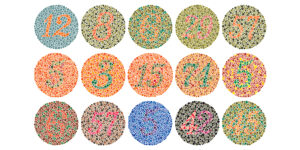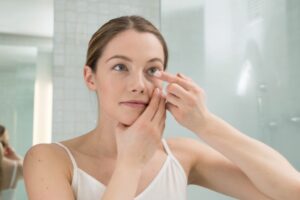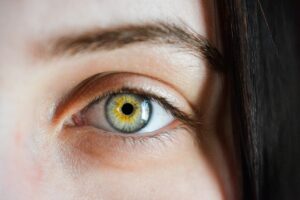I knew that:
People with intense unprotected sun exposure are 60% more likely to have cataractultraviolet rays accelerate the ageing of the crystalline lens, which is the eye's natural lens ?
Other problems caused by too much sun are photokeratitis, pinguecula, pterygium or even retinal diseases such as age-related macular degeneration (ARMD).

The most common damages in short periods of exposure are:
- itching
- tear
- photophobia
- swollen eyelids
- feeling of sand in the eyes
But beware: It's not enough to choose just any type of sunglasses, the ideal ones should have lenses that protect against ultraviolet radiation (UVA e UVB).
Wear sunglasses that don't protect against the sun's rays.
ultraviolet rays is worse than wearing nothing at all.
Poor quality sunglasses only darken, which causes the pupil to dilate, making it easier for solar radiation to enter the eye.
But why is the sun dangerous for your eyesight?

Ultraviolet rays are divided into 3 bands: UVA, UVB and UVC.
UVA - between 315 and 400 nm, not absorbed by the ozone layer.
They are less harmful to living beings because they are closer to visible light.
UVB - between 290 and 315 nm, partially absorbed by the ozone layer.
They cause serious damage to the skin and eyes. They can cause skin burns and damage the cornea.
UVC - between 220 and 290 nm, they are very dangerous but do not reach the Earth's crust as they are absorbed by the ozone layer.
What are the ideal sunglasses?
- Sometimes, in the search for the lowest price, many people opt to buy sunglasses that aren't up to scratch. And in this case, cheap can be very expensive.
- The function of sunglasses is to ensure optimum eye protection, improve the perception of contrasts, eliminate glare and optimise visual acuity by improving the vision of details.
- The decision to buy sunglasses must take into account, first and foremost, the level of protection against ultraviolet radiation (UVA and UVB) that the lenses offer.
- As well as knowing the level of protection, the fit of the glasses to your face should also be considered when buying them.
- The colour of the lens should be chosen for functional needs, to reduce migraines, photophobia and improve vision.
Mirror treatment
The mirror treatment absorbs 100% of UVA and UVB rays, making it the most efficient sunscreen for protecting the eyes. For this reason, it is the most recommended for outdoor activities.
Polarised lenses
The polarised lenses eliminate glare and simultaneously reduce the brightness of the light. When driving, they eliminate glare from light reflected off the windscreen, reducing dazzle.




